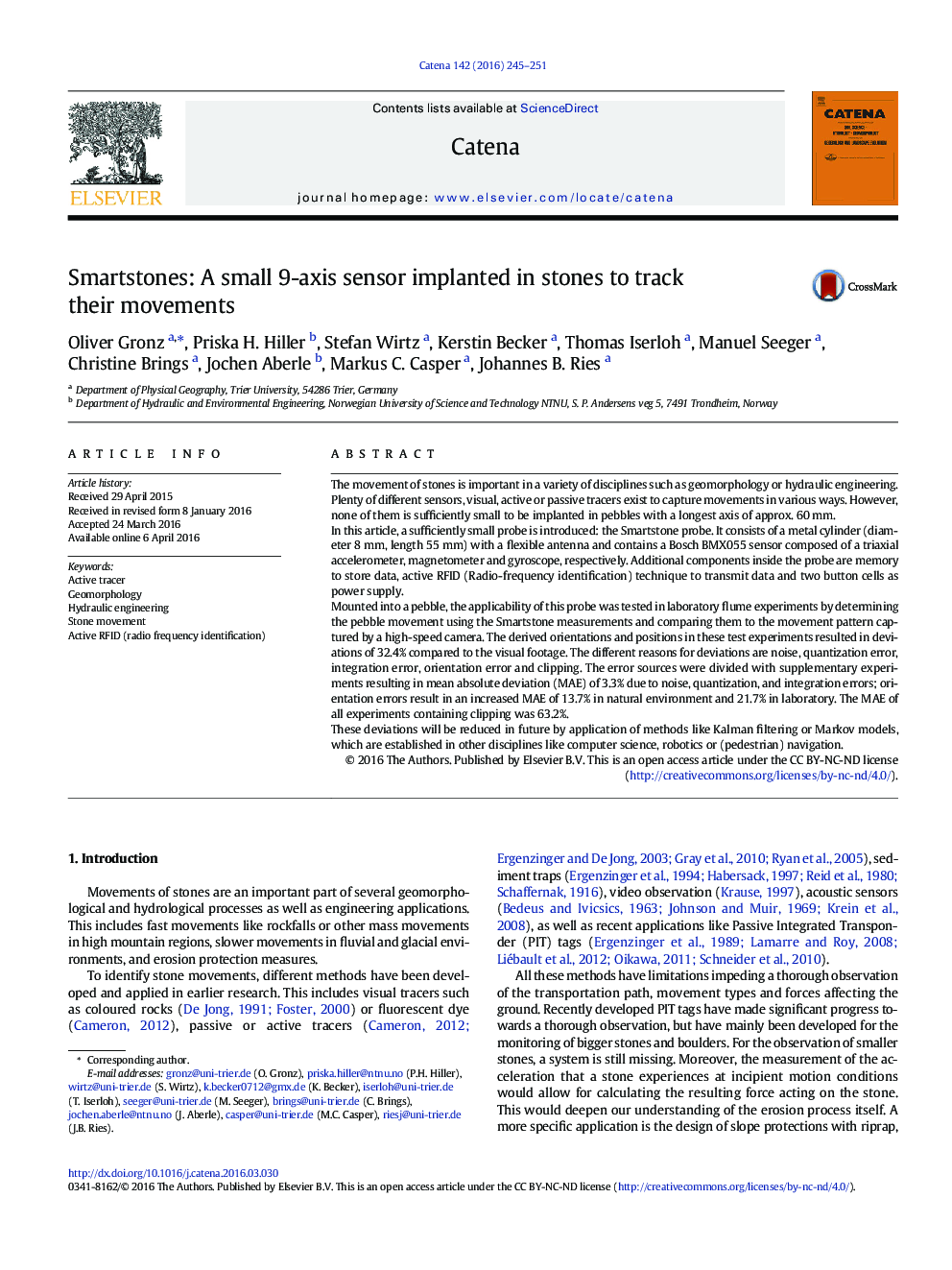| Article ID | Journal | Published Year | Pages | File Type |
|---|---|---|---|---|
| 6407843 | CATENA | 2016 | 7 Pages |
â¢Small probe dimensions: cylindrical, 8 mm diameter, 55 mm lengthâ¢Contains 9-axis sensor: 3-axis magnetometer, 3-axis accelerometer, 3-axis gyroscopeâ¢Samples up to every 12 msâ¢Additional features: memory, battery, wireless data transmission via active RFIDâ¢Allows for derivation of orientation, approximate position and impact magnitude
The movement of stones is important in a variety of disciplines such as geomorphology or hydraulic engineering. Plenty of different sensors, visual, active or passive tracers exist to capture movements in various ways. However, none of them is sufficiently small to be implanted in pebbles with a longest axis of approx. 60Â mm.In this article, a sufficiently small probe is introduced: the Smartstone probe. It consists of a metal cylinder (diameter 8Â mm, length 55Â mm) with a flexible antenna and contains a Bosch BMX055 sensor composed of a triaxial accelerometer, magnetometer and gyroscope, respectively. Additional components inside the probe are memory to store data, active RFID (Radio-frequency identification) technique to transmit data and two button cells as power supply.Mounted into a pebble, the applicability of this probe was tested in laboratory flume experiments by determining the pebble movement using the Smartstone measurements and comparing them to the movement pattern captured by a high-speed camera. The derived orientations and positions in these test experiments resulted in deviations of 32.4% compared to the visual footage. The different reasons for deviations are noise, quantization error, integration error, orientation error and clipping. The error sources were divided with supplementary experiments resulting in mean absolute deviation (MAE) of 3.3% due to noise, quantization, and integration errors; orientation errors result in an increased MAE of 13.7% in natural environment and 21.7% in laboratory. The MAE of all experiments containing clipping was 63.2%.These deviations will be reduced in future by application of methods like Kalman filtering or Markov models, which are established in other disciplines like computer science, robotics or (pedestrian) navigation.
Graphical abstractDownload full-size image
